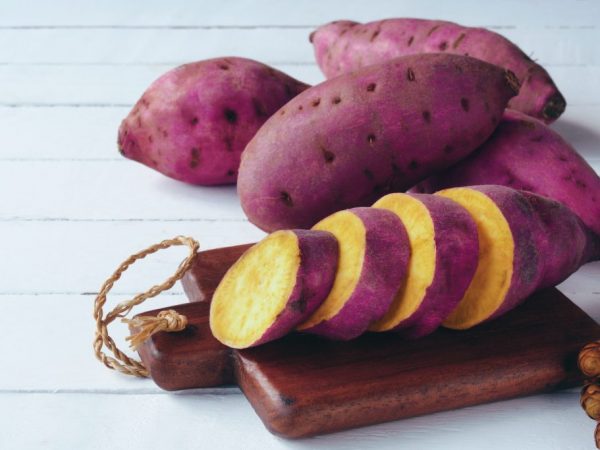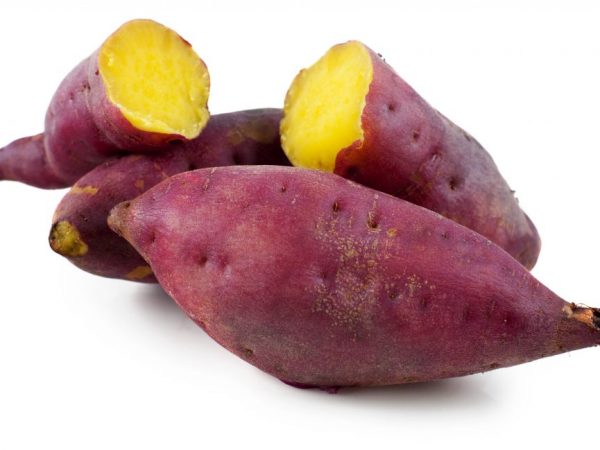Description of the Blue Danube potatoes
The Blue Danube potato has gained immense popularity all over the world in just a few years. Due to the fact that breeders have taken care of its immunity, it can be grown for organic products. Moreover, this type of root crop is resistant to long-term transportation, and can be stored for a long time in the right conditions.

Description of the Blue Danube potatoes
Variety characteristic
The Blue Danube potato originated in Germany, in the early years of the 21st century. For several years, he received recognition all over the world, and in 2005 he was entered into the national register of Russia. The uniqueness of this type of root crop is that it shows high yields in all regions of the country. It does not depend on climatic conditions.
Breeders have created this variety that matures in medium terms. From the beginning of the emergence of the first shoots to the complete end of the growing season, only 100 days pass.
This potato variety was based on the Sarpo Mira species, which differs from other brethren in its high characteristic of resistance to common diseases. That is why the Blue Danube is popular among amateur gardeners and farmers with long experience.
Description of the plant
The stem of this potato variety is distinguished by its strong structure. Its height is average, and the maximum reaches 1.2 m in height. The bushes always stand upright and do not fall apart throughout the garden. A high characteristic of foliage is noted, which does not allow weeds to germinate through the tops.
The leaves are predominantly green. You can find tops that would have a rich green color. There is a slight ribbing and waviness around the edges of the foliage, which makes the leaves more beautiful. The flowers are rich yellow, and the corollas are presented in purple hues.
Description of the fetus
The fruit has an oval ideal shape. Each of the fruits is covered with a high density purple rind. The description of the variety indicates the presence of medium sized eyes. The eyes are presented in small quantities, which only increases the commercial qualities of the root crop.
When cut, a light shade of the pulp is observed. The description suggests that it is a high-yielding root crop variety. From 1 hectare, farmers harvest about 400 centners of ideal quality fruits. The average weight of an individual root crop reaches 200 g. The amount of starch in the Blue Danube is average. Only 10-13%.
This potato is a table variety. It has a high characteristic of taste and commercial quality. During cooking or frying, it is not subject to cracking and is rarely boiled. This is ideal for preparing any kind of salads. This is a universal type from which dishes of any complexity are prepared. Specialists in the field of culinary have classified this species as category A and B.
Advantages and disadvantages
The most important positive characteristics of this type of root crops include:
- potatoes have ideal taste;
- there is a high level of productivity and the number of marketable fruits, even in conditions of infertile soil;
- easily tolerates long-term transportation and can be stored for a long time in utility rooms;
- not subject to mechanical damage;
- has immunity to common viral diseases.
The disadvantages include the fact that this species is very demanding on the irrigation regime.
Growing principle

Potatoes love the sun
In order to plant this variety, you need to choose sunny gardens in which water rarely stagnates. Landing is carried out according to the principle "from north to south". This will allow the plants to get even sunlight and germinate faster. Since this species does not degenerate, last year's potato crop can be used for planting this year. It is important to choose only those fruits that are medium in size and have a large number of sprouts.
After the seed material has passed the selection and put out the roots, it is required to treat them with a growth stimulant and substances that block the influence of parasites and diseases. Wait for the moment when the soil warms up after the spring frost. The ideal temperature is 12 ° C. A distance of 50 cm should be adhered to between the rows, but between the bushes it should be 20 cm.Seed material is buried in the soil to a depth of no more than 12 cm.
Care
Do not forget that these potatoes require careful maintenance. First, you should regularly remove weeds and loosen the soil. Secondly, hilling is carried out 2 times per season, with an increase in the height of the beds. Do not forget about the introduction of organic fertilizers. The ideal option is cow or bird droppings.
In order for nutrients to completely saturate the fruits, it is important to pay attention to the degree of tops growth. Once the tops are starting to bloom, it is important to break the stem a little. It is best to do this 10-15 cm from the soil. This will slow down the growth of the stem and saturate the tubers.
Watering should be carried out in the evening. This will leave moisture in the leaves and saturate the soil more. Watering should be stopped 20 days before harvest. If this condition is neglected, then the storage time of the harvested tubers will be significantly reduced.
Prophylaxis
It is believed that the Blue Danube is not exposed to known diseases and pests. The breeders made sure that the farmers did not worry about their harvest. But, do not forget that the invasion of parasites can never be predicted. At such times, you should remember about preventive methods.
Before planting this potato variety, it is best to treat the seed material with special chemicals. You can use Fofatox or Admiral. During flowering, it is worth sprinkling the plant with substances that contain copper. This will protect it from the invasion of the Colorado potato beetle or aphids.
Conclusion
The Blue Danube very quickly earned the title of the most resistant variety to diseases and pests. In addition, it has a high quality crop, therefore it is used for sale. There are no special preferences in care, but it is still advisable to huddle and water the garden in time. This will give you the desired yield in terms of yield.


